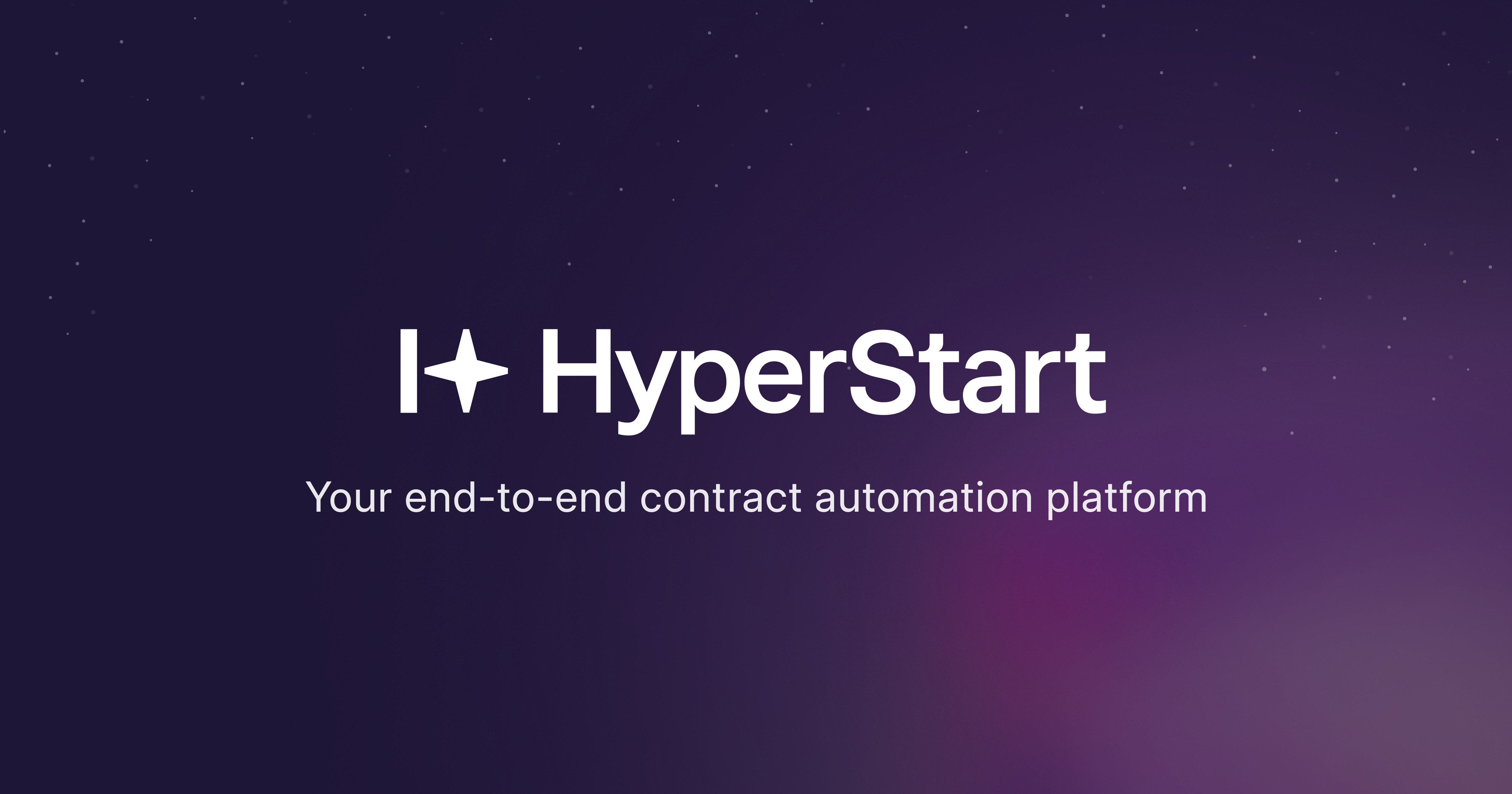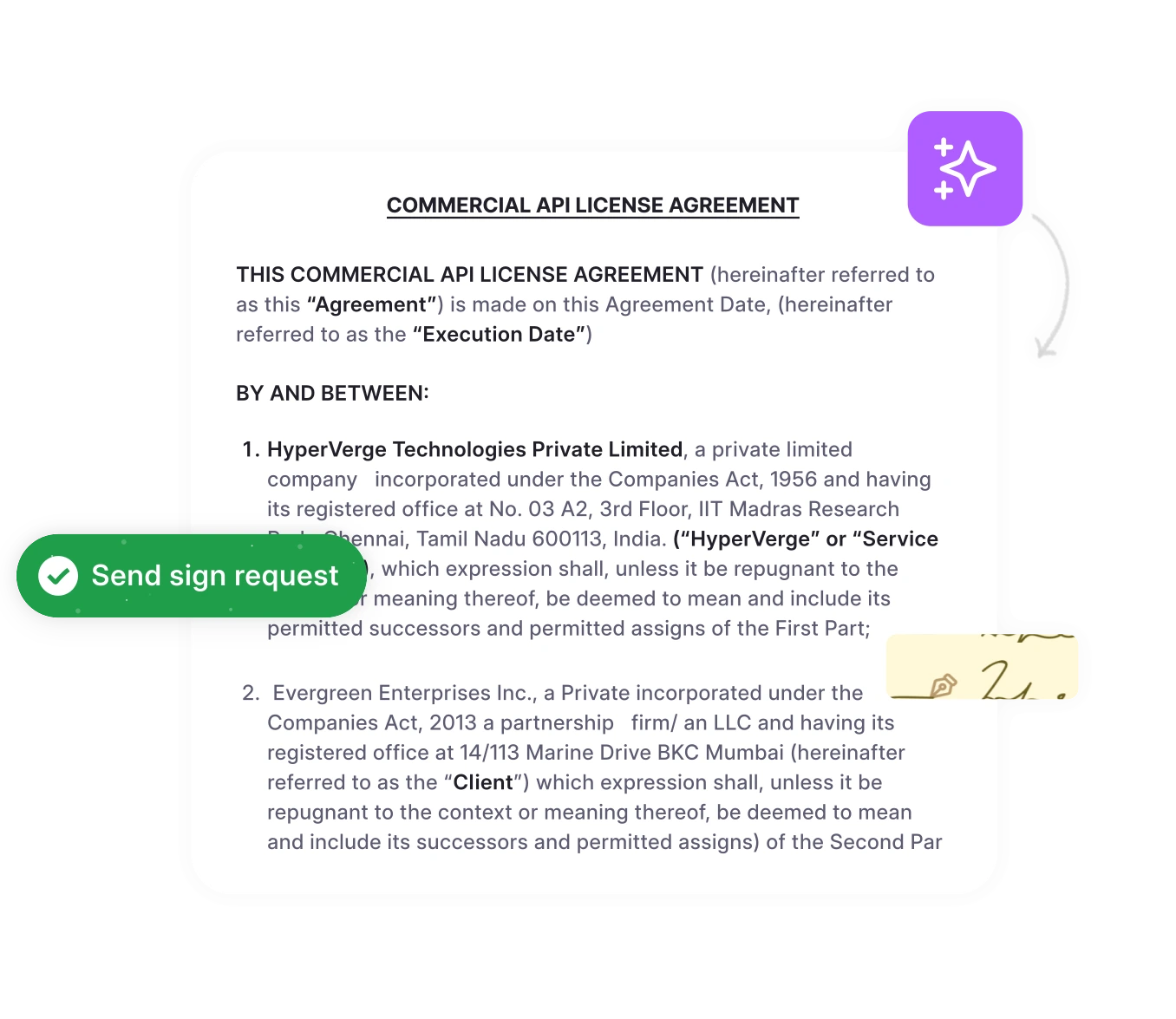Our businesses run on SaaS products, from managing projects to keeping customers happy. But how often do deal closers scrutinize the contracts before signing?
Rushing into a deal can lead to surprise fees, security risks, or getting stuck with a tool that no longer meets your needs. On the flip side, a well-negotiated contract means better pricing, stronger support, and the flexibility to grow without unexpected roadblocks.
So, in this guide, we will break down everything you need to know about SaaS contract negotiations.
Let’s get started.
5 types of SaaS contracts and their business implications
SaaS contracts aren’t one-size-fits-all. Different agreements come with unique commitments, risks, and benefits. Whether you’re a startup purchasing a single SaaS tool or an enterprise managing hundreds of vendors, understanding the types of SaaS contracts can help you make smarter decisions and manage SaaS contracts easily.
Let’s break down the main types of SaaS contracts and how they impact your business.
1. Subscription-based contracts
Pay-as-you-go flexibility, but watch out for auto-renewals
Recurring monthly or annual fees
Typically comes with auto-renewal clauses
Can be scaled up or down based on usage
Business implications:
Budget-friendly, as costs are spread over time
No large upfront investment, making it easier for startups
Can be expensive long-term if price increases aren’t negotiated
Auto-renewals can lock you in unexpectedly
2. Perpetual licensing contracts
One-time purchase with limited flexibility
Pay once, own the software indefinitely
No recurring subscription fees
May require separate maintenance and support fees
Business implications:
Lower long-term cost compared to subscription models
No surprise price hikes or renewal concerns
Higher upfront cost
You might miss out on new features or updates
3. Usage-based contracts
Best for variable or unpredictable usage.
Pricing is based on actual usage (e.g., API calls, storage, active users)
Common in cloud computing, AI services, and developer tools
No fixed commitment, billed based on consumption
Business implications:
Cost-effective for businesses with fluctuating needs
No charges for unused capacity
May be unpredictable, and costs can spike unexpectedly
Harder to budget compared to fixed subscription models
4. Tiered pricing contracts
Different pricing levels are based on features or users.
SaaS vendors offer multiple plans (Basic, Pro, Enterprise, etc.)
Higher tiers include more features, support, or scalability
Upgrades and downgrades are common
Business implications:
Allows businesses to start small and scale up as needed
Good for aligning features with actual business needs
Upgrading can be expensive, you may pay for features you don’t need
5. Freemium and trial-based contracts
Low-risk entry point, but may lack essential features.
Free version with limited features (Freemium)
Time-limited access to full features (Trial)
The goal is to convert free users into paying customers
Business implications:
Great for testing a product before committing
A low-risk way to explore the functionality
Free plans often lack critical security or admin controls
Trials can end abruptly, forcing an urgent decision
Now, let’s talk about the specific challenges you’ll likely encounter during the contract negotiation process.
Get the best deal on your SaaS contracts
With HyperStart, you can streamline approvals, automate contract reviews, and secure better terms, without the back-and-forth hassle.
Book a Demo6 key challenges in SaaS contract negotiation and how to handle them
Anticipating challenges beforehand will help you prepare and navigate your negotiation strategy more effectively.
1. Navigating unclear pricing and hidden costs
Vendors sometimes use complex pricing models, making true comparisons tricky. They might also hide fees in the fine print. The challenge here is to extract complete pricing transparency before you commit to any SaaS purchases.
The Solution: Demand a detailed breakdown of all costs, including one-time fees, recurring fees, and potential overage charges. Don’t hesitate to clarify if the pricing is unclear. Ask “what if” questions about different usage scenarios.
2. Balancing flexibility and commitment
You need contract flexibility to accommodate your changing business needs, but SaaS companies often prefer long-term commitments. The challenge is finding the right balance.
The Solution: Negotiate for shorter contract terms, especially for new software. Explore options for month-to-month renewals or contracts with clear exit clauses. Be prepared to explain why flexibility is important for your business.
3. Security, compliance, and legal concerns
Protecting your data is non-negotiable. The challenge is ensuring that the vendor’s security measures are up to par and that the contract adequately addresses data security, data protection, and contract compliance requirements.
The Solution: Thoroughly review the vendor’s security policies and certifications. Involve your IT and legal teams in the process. Don’t be afraid to ask tough questions about their security protocols. Ensure the contract includes strong data protection clauses and complies with all applicable regulations.
4. Mitigating vendor lock-in
Vendor lock-in can severely limit your options if you are stuck with a vendor for longer than relevant.
The Solution: Negotiate for data portability clauses that guarantee access to your data in a standard, easily exportable format. Clarify who owns the data and what happens if you terminate the contract. Inquire about the migration process and any associated costs.
5. Negotiating favorable terms
Vendor contract negotiations can be tough if they are unilaterally trying to maximize their profits.
The Solution: Do your research. Understand the market pricing for similar solutions. Prepare to walk away if the deal isn’t right. Leverage any competitive offers you have. Don’t be afraid to ask for discounts or other incentives.
Essential terms to negotiate in a SaaS contract
Before you jump into negotiating SaaS contracts, doing your homework is important. Here’s what you need to evaluate before starting the conversation with a vendor.
1. Understand the pricing model
SaaS spending isn’t always straightforward, and different vendors use different models. Make sure you know exactly how you’ll be charged:
Flat-rate pricing – One set price for all users.
Per-user pricing – You pay for each person who has access.
Usage-based pricing – Pricing fluctuates based on how much you use the software.
Feature-based pricing – Higher tiers include more features.
If you’re negotiating a large software license agreement, ask for a custom pricing structure instead of standard plans.
2. Check the renewal terms
Many SaaS vendors automatically renew contracts, sometimes at a higher price. You could be stuck with unexpected costs if you don’t review these terms upfront.
Is auto-renewal enabled? If so, can you turn it off?
Will the price increase after the first term? If yes, negotiate a price cap.
How much notice do you need to cancel? Some vendors require 30, 60, or even 90 days’ notice.
Negotiate a renewal reminder clause so the vendor has to notify you before the renewal kicks in.
3. Assess the exit strategy
What happens if you decide to cancel? Some SaaS companies make it easy to leave, while others make it a big deal.
Data portability: Can you easily export your data if you switch vendors?
Early termination fees: Are there penalties for canceling before the contract ends?
Migration support: Will the vendor help transition your data to a new provider?
Even if you don’t plan on switching anytime soon, always negotiate clear exit terms. Future-you will thank you.
4. Evaluate the vendor’s reputation
Not all SaaS providers are created equal. Before signing anything, do a little background research.
Customer reviews: Check sites like G2, Capterra, or Trustpilot.
Support responsiveness: Reach out to customer support and see how quickly they respond.
Security track record: Look for any past data breaches or compliance violations.
Ask for customer references, especially from businesses similar to yours to get a real-world view of the vendor’s service quality.
SaaS contract negotiation checklist: What to review before you sign
Using a checklist can be helpful during the negotiation process to make sure you’ve covered all your bases.
Pricing & payment
Payment Terms (Net 30, etc.)
Price Escalation Caps (Limit future price increases)
Payment Frequency (Annual – often gets you a better rate)
Free Trials/Proof of Concept (Extended trial or paid POC)
Contract length & renewal
Renewal Terms (Notice Period required before auto-renewal, shorter renewal periods)
Exit Clauses (Clear terms, minimal penalties for early termination)
Service level agreements (SLAs) & uptime
Response Times (Defined by severity level – how quickly they respond to different issues)
Remedies (Service credits, penalties if they fail to meet SLAs)
Liability, indemnification & compliance
Indemnification (They protect you from legal claims related to their service)
Compliance (GDPR, HIPAA, CCPA, etc. – ensure they meet relevant regulations)
Data ownership & portability
Data Portability (Easy export in a standard format – so you can take your data if you leave)
Data Security (Detailed measures they take to protect your data)
Support & training
Response Times (How quickly they respond to support requests)
Training (Included? What kind of training is provided?)
Integration & customization
Customization Options (Can the software be tailored to your specific needs?)
Don’t let hidden fees or rigid contracts slow you down
HyperStart helps you negotiate smarter, automate contract reviews, and lock in better deals effortlessly.
How to negotiate SaaS contracts: 3 key strategies
Knowing what to negotiate and how to negotiate are two different things. You can end up paying more or agreeing to terms that don’t work in your favor.
So, how do you ensure you get the best deal possible? Here are 3 proven strategies to negotiate smarter.
1. Leverage competitive quotes
SaaS vendors are more likely to offer better pricing and terms when they know you have alternatives. If a vendor believes they’re your only choice, they have no reason to budge.
How to use this strategy:
Get quotes from at least two or three competing vendors before negotiating.
Ask vendors about price-matching or feature-matching if a competitor offers a better deal.
Mention that you’re evaluating multiple options (without revealing specifics) to create a sense of competition.
2. Time your negotiation wisely
SaaS vendors have sales quotas, and the timing of your negotiation can impact flexibility. The best time to negotiate? At the end of a quarter or fiscal year when sales teams are under pressure to hit their targets.
How to use this strategy:
End of quarter: March, June, September, and December are key times when vendors push for deals.
End of year: Many vendors give their best discounts in Q4 (October-December).
Before renewal: If you’re an existing customer, start negotiating 60-90 days before your contract renews.
3. Push for value beyond just pricing
What you can negotiate instead of price:
Longer free trial – More time to test before committing.
Premium support – Faster response times and dedicated account managers.
Extra features or seats – Access to higher-tier functions at the same price.
Training and onboarding – Free setup and training for your team.
How can HyperStart help you negotiate better SaaS contracts?
Negotiating SaaS contracts doesn’t have to be a hassle. With the right tools, you can make the process faster, smarter, and more efficient and that’s exactly what HyperStart is all about. If you’re looking to get better deals, avoid unnecessary delays, and have more control over your contracts, here’s how HyperStart can make it happen:
Streamlined approval processes – We know how much time can be wasted in contract approval workflows. With HyperStart, you could save up to 70% of the time spent on contract admin.
AI-powered contract review – HyperStart uses AI to scan and analyze contracts quickly, identifying key clauses and potential risks.
Faster contract creation and execution – Our pre-approved templates allow you to draft contracts in just two minutes.
Automated redlining and tracking – Make quick edits and track proposed changes, reducing negotiation time by up to 75%.
Centralized contract management – Keep everything organized in one place for easy access and quick referencing.
Proactive deadline management – HyperStart sends automated reminders for contract renewals and renegotiations.
Enhanced collaboration tools – With HyperStart, stakeholders can edit contracts collaboratively, speeding up the process.
Therefore, negotiating SaaS contracts doesn’t have to be hard. With HyperStart, you can speed up the process and get better terms. Schedule a demo now.



![How to Negotiate SaaS Contracts [A Guide]](https://www.hyperstart.com/wp-content/uploads/2025/02/Blog-60-purple-scaled.webp)







